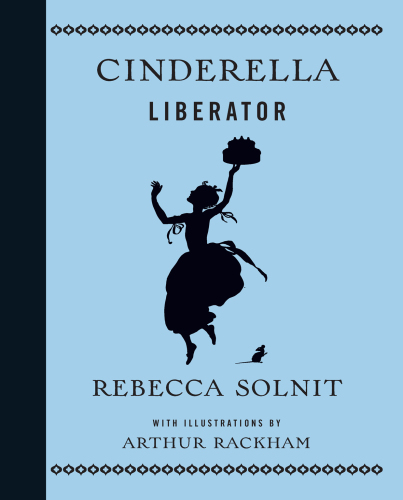
Cinderella Liberator
کتاب های مرتبط
- اطلاعات
- نقد و بررسی
- دیدگاه کاربران
نقد و بررسی

February 25, 2019
In this progressive retelling, Solnit carefully excises nearly every aspect of the “Cinderella” tale that readers might find objectionable. No one falls in love, the prince wishes he was a farmer, and the stepsisters eventually apologize to Cinderella, who herself says, “It was very interesting to see all the fancy clothes... but even more interesting to see lizards become footwomen.” Every possible moral lesson is explicitly spelled out—“everyone can be a fairy godmother if they help someone who needs help, and anyone can be a wicked stepmother”—and the low-key action, which resolves in everyone finding the work that suits them, supports the idea that “there is no happily ever after, only... tomorrow... and the day after that.” Illustrations based on Rackham’s masterful, timeless silhouettes offer a counterpoint to a text that is very much of the moment. Ages 7–10.

With a little help from her fairy godmother, Cinderella takes care of business while learning how to be her "best and freest" self. With the avowed intention of creating a "kinder" vision of the familiar tale that also gets away from the invidious notion that marrying (preferably marrying up) is the main chance in life for women, Solnit (Call Them by Their True Names, 2018, Kirkus Prize winner in nonfiction) offers younger readers this revisionist Cinderella. She arrives at the ball attended by transformed "footwomen," befriends Prince Nevermind (who really just wants to be a farmer), and, while her stepsisters take up careers in fashion, goes on to open a cake shop where she harbors refugee children. The author's efforts to get away from sexist tropes and language aren't entirely successful (one stepsister becomes a "seamstress," for instance), and an analytical afterword in cramped type that rivals the tale itself for length further weighs down the wordy, lecture-laden narrative. Still, readers ready to question the assumptions innate in most variants, European ones in particular, will find this one refreshing. The carefully selected Rackham silhouettes, first published a century ago, invest "Ella" with proactive spirit while (as the author notes) sidestepping racial determinations (in skin color at least, if not hair texture). A story with a serious claim to universality again proves that it can bear a carriage full of messages. (lengthy source note) (Folktale. 8-10)
COPYRIGHT(2019) Kirkus Reviews, ALL RIGHTS RESERVED. (Online Review)

August 16, 2019
Gr 2-4-Though she still has plenty of dirty chores to do, Cinderella is not confined to household drudgery in this feminist reworking of the old tale. She's a good cook and bakes ginger cookies, and she's out and about visiting farms and the marketplace, becoming friends with all the workers there. On the day of the Prince's ball she's a skillful hairdresser for Pearlita and Paloma, those obnoxious stepsisters. And she's the most talented dancer when she herself arrives at the ball. Solnit tells the story in five numbered segments. She mostly follows the general scheme of Perrault, but this is not the romantic story of falling in love that he was telling. The fairy godmother, a little blue woman, shows up when Cinderella wishes that someone might help her. The familiar magic happens. Cinderella and Prince Nevermind (we don't know how or why the character names were devised) will become friends as both are liberated from their confining lives. In the lengthy closing section they are too young to marry but she owns a very successful bake shop, and he becomes a farm worker. Solnit explains how Ella (no more cinders) is a liberator-"someone who helps others figure out how to be free." Selected silhouettes from Rackham's Cinderella and Sleeping Beauty work pretty well with the long narrative with its generous phrasing of conversations, descriptions, explanation of personality traits, and several philosophical lessons along the way. In a long afterword, the author discusses choices she made in selecting this story, reworking it, and choosing the Rackham illustrations. The liberator theme may be murky for many children. The feminization of some characters-the coachwoman, the footwomen, Cinderella's real mother the sea captain-will strike some readers as rather forced. Nonetheless, this is a version of the oft-told tale that will surely find a place among the copious retellings. VERDICT Give this variant to older fairy-tale fans. It could certainly be a fun discussion choice.-Margaret Bush, Simmons College, Boston
Copyright 2019 School Library Journal, LLC Used with permission.

























دیدگاه کاربران